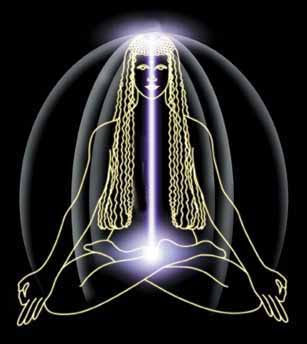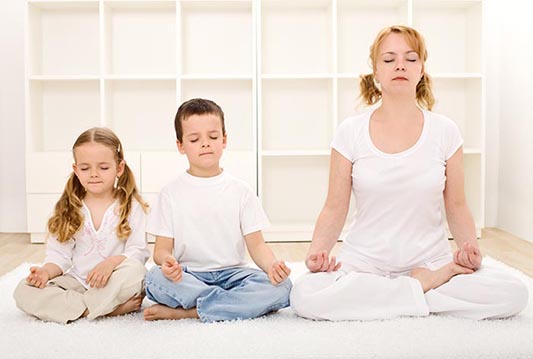


Meditation can be done with or without music, using various breathing techniques, in most environments, at any time of the day or night, alone or in a group, or enhanced during a celestial event.
When we pray we talk to the other side. When we meditate, we receive messages that can be personal or from the collective unconsciousness. As with dream projections, images received in meditation can be in black and white, color, still-frames or animated.
Interpreting symbols or images can be fun or frustrating as they often have multiple or enigmatic meanings. For example - seeing a baby may indicate the birth of a child or something new. Interpreting imagery is not much different than dream interpretation.
The human chakra system often reacts during meditation usual in the form of a pressure in an energy center.
Sometimes it is helpful to keep a dated journal of the messages you receive as one would with a dream journal. What makes no sense today, might be understood at a future time.
Clairalience (Smell)
Clairaudience (Hearing, Thoughts)
Clairgustance (Taste)
Clairsentience (Touch)
Clairvoyance (Visuals)
How do you see images in your brain? Live Science - September 30, 2024
Mental imagery is the ability to visualize things and scenarios in your mind, without actual physical input. For example, when you think about your best friends, you may automatically picture their faces in your head without actually seeing them in front of you. When you daydream about an upcoming vacation, you may see yourself on the sunny beach. Scientists believe your primary visual cortex, located in the back of your brain, is involved in internal visualization. This is the same part of the brain that processes visual information from the eyes and that lets you see the world around you. Another brain region, located in the very front of the brain, also contributes to mental imagery. This structure, called the prefrontal cortex, is in charge of executive functions - a group of high-level mental skills that allow you to concentrate, plan, organize and reason.
Find a quiet place, free of distractions.
Turn off cell phones.
Adjust lighting, room temperature, create ambiance with candles, crystals, incense, or anything else that sets the mood.
Outdoors meditations might include a beach or meadow, anywhere in nature that is quiet and serene.
Loosen clothing, remove eyeglasses, footwear, any restrictive garment.
You may play music or meditate quietly.
Prepare a means of recording what you experience after meditation.
Sit down or lie down. Find a position that is comfortable for you.
You are now ready to begin.
Inhale slowly through your nose.
Relax your body ... starting with your neck, head, jaw, shoulders, arms, back, torso, and legs.
Allow your consciousness to guide your journey.
If you fall asleep, that's okay especially during a long meditation.
There will be times your meditation will be a flood of imagery. On other occasions, you may see nothing.
Suggested places to virtually experience during meditation:
meeting your spirit guide
seeing your power or totem animal
a journey with an ascended master or angel
meeting a deceased loved one
Why is meditation so important in 'this' timeline? It quiets the mind and the chatter within to cope with daily anxieties and for clarity of thought. so important in 'this' timeline? The obvious is it quiets the mind and the chatter within to cope with daily anxieties and for clarity of thought.
In a bipolar physical reality we discover that there's positives and negatives in everything experienced - all part of the emotional package of this experiment.
That will never change until the simulation (reality) ends which takes us to the concept of time.
Everything runs on binary code - ones and zeros. This affects the concept (illusion) of time.
The Time Codes have changed as we move toward closure (0,1). The way we experience "time" is no longer in synch with the human brain as once it was.
For most people it's a feeling of time speeding up. Others report different reactions - including a disconnect from the concept of time when meditating.
Reality is a consciousness simulation set in linear time to experience emotions. The brain is an electrochemical machine (computer) that process through experience. Meditation creates balance in brain chemistry, especially for those who suffer from emotional problems and other challenges.
Messages can be received through...

Hold the breath as is comfortable for you.
Exhale slowly through your mouth.
Repeat two more times or as is comfortable for you.
You are using meditation as a relaxation to tool to allow your consciousness to detach from physical reality.
parallel experience in the grid (past and future timelines)
